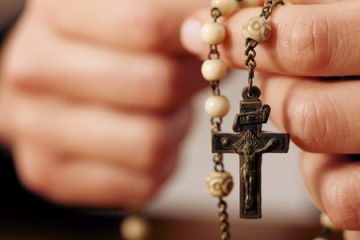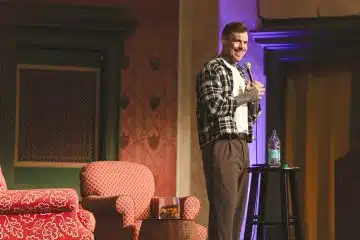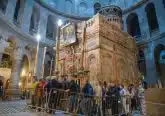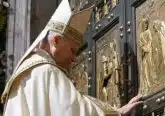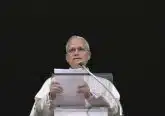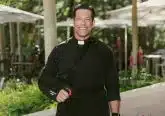Kentucky school example of embracing the different, loving one’s neighbor

IMAGE: CNS photo/Tyler Orsburn
By Tyler Orsburn
HENDERSON, Ky. (CNS) — When it comes to sizable Hispanic populations, Henderson isn’t Los Angeles or New York City.
Nestled in the western part of the Bluegrass State, the Ohio River faithfully meanders by smooth fields of corn, soybean and patches of woods. Its most famous resident is naturalist and artist John James Audubon.
“Coming to Henderson, that’s where I learned I was Latino!” Abraham Brown, director of Latino ministry for Holy Name of Jesus Catholic Church, jokingly said about moving from the Lone Star State. “Because down there in Texas everybody looked just like me, spoke just like me. So, coming here was a challenge at the beginning.”
Brown moved to Henderson 15 years ago to work for a denim company. But when it closed, the Catholic parish, which is part of the Diocese of Owensboro, asked him to help with the growing Latino community.
Now he works with Latinos from 13 countries, and has seen the Spanish Mass turnout increase from 20 to 30 per week to 100 to 150, he said.
“We do have a very proactive approach for integration,” Brown told Catholic News Service. “Not just assimilating but actually sharing of their own values and culture (through dance, food and worship) with our community.”
Father Anthony Shonis, associate pastor at Holy Name of Jesus, credits the late Owensboro Bishop John J. McRaith for helping this assimilation.
“Toward the end of the 1980s, you might start seeing Hispanics at the Dairy Queen or Walmart,” the bilingual pastor told CNS while sitting in the rectory dining room. “Bishop McRaith (during that time) sought funding and wrote grants so that all priests where Spanish was spoken had an ‘ayudante.'”
An “ayudante” is a bilingual helper who is respected in both the Hispanic and Anglo community that helps migrants meet both their parish and well-being needs. “They’re a bridge builder,” Father Shonis said. “This person is worth their weight in gold.”
Brown, Father Shonis’ “bridge builder” says the Latino population in western Kentucky, southern Indiana and southern Illinois has doubled in the past five years. “A lot of people say that, ‘Oh, it’s just because there are a lot of job opportunities.’ But job opportunities without a welcoming spirit, it (integration) doesn’t work.”
One place where it has worked is the school. Situated near a barbershop and about a block-and-a-half from the steeple, the downtown school has native Spanish speakers in every grade.
And Susana Solorza is the ladle that stirs the vernacular melting pot. The El Paso, Texas, native said she’s the only K-8 Spanish teacher in the district, and if her seventh and eighth grade students earn B-averages for both years, they’ll rake in a “Spanish I” high school credit.
“What I’m trying to do is shake the stereotypes Caucasians have of Latinos by speaking to them in English and letting them hear me speak Spanish to other students,” she said describing part of her teaching technique. “By being their teacher, letting them get to know me through music, (food) and talk about my family (which helps break the stereotypes).”
For her Hispanic students, she shows them there’s a teacher like them and brings some normalcy to what is different about them. “I think having a teacher to fill that cultural gap, the linguistic gap, is very important because our families are here, and they want to be involved, and they try to be involved, and they want to see their students succeed,” Solorza told CNS.
“Probably something that the Hispanic community has added most to our school is the diversity and knowing that just because someone is different doesn’t mean they’re weird,” Scottie Koonce, principal at Holy Name of Jesus Catholic School said describing how students sometimes view life. “And probably the thing Hispanics have added to our community is that they’ve taught the kids that Catholicism isn’t local, it’s global.”
Koonce went on to describe how the students love acknowledging the Latino celebrations of the Day of the Dead and Las Posadas. “I feel like our kids are starting to understand each other better, and that’s really where it starts — because if the kids start understanding each other better and respect each other it carries over to the adults.”
“Pope Francis has said, ‘You have to take risks and go across barriers,'” Father Shonis said describing wide city streets and railroad tracks. “This effort of going to the other side can never end. And this is the foundation of Catholic schools, to bring minorities into the mainstream.”
– – –
Copyright © 2018 Catholic News Service/U.S. Conference of Catholic Bishops. www.catholicnews.com. All rights reserved. Republishing or redistributing of CNS content, including by framing or similar means without prior permission, is prohibited. You may link to stories on our public site. This copy is for your personal, non-commercial use only. To request permission for republishing or redistributing of CNS content, please contact permissions at [email protected].





